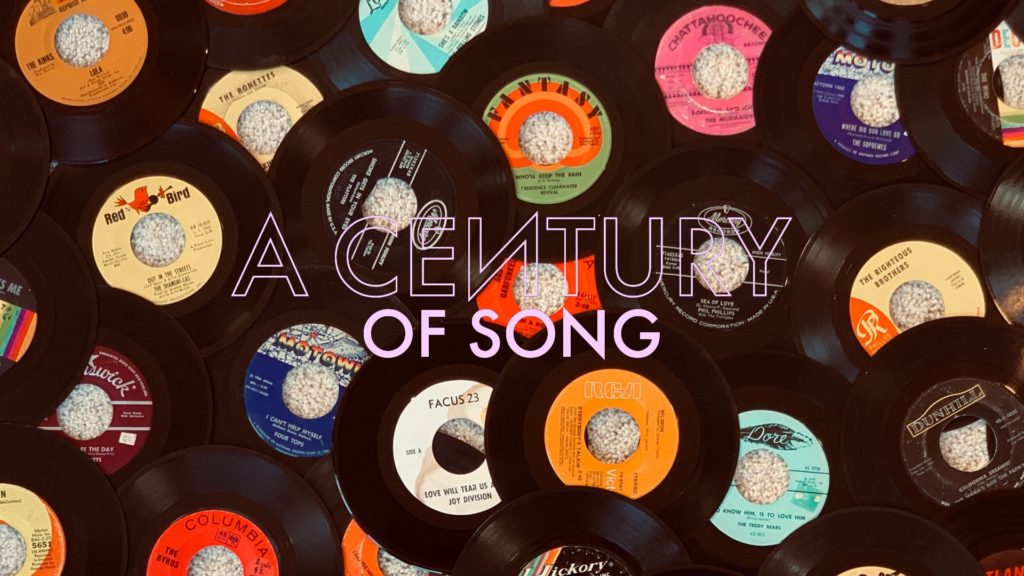
A Century of Song is an attempt to summarize 100 years of popular music through 1000 carefully chosen tracks. Included within this list are landmark singles, stellar album cuts, huge hits, hidden gems, and more than a few personal favorites. Read the introduction for the project here, and enjoy the embedded videos and Spotify playlist.
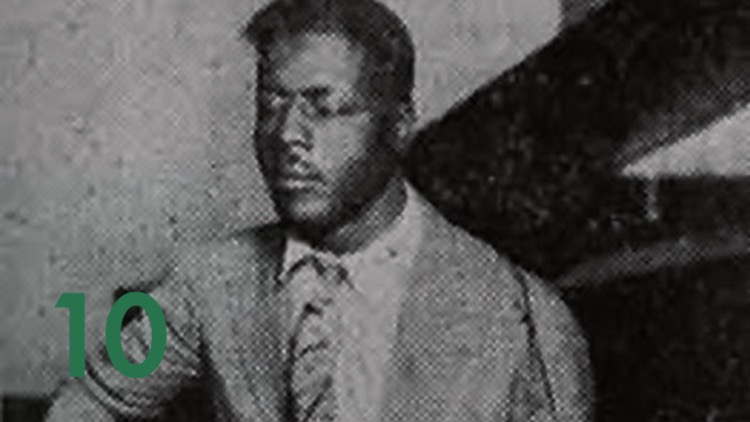

In 1977, the Voyager probe was sent into space, carrying with it a pair of “golden records” designed to be played by any form of intelligent life that might encounter the craft. These discs were carefully curated by a team headed by Carl Sagan; the images, sounds, and messages contained within were selected with the purpose of educating whoever – or whatever – crossed their path about life on the planet Earth. Among the dozens of artifacts encoded within the discs was this song, recorded in 1927 by the son of a sharecropper.
Willie Johnson was born in Brenham, Texas in 1897. At the age of seven, he was permanently blinded when lye water was thrown in his face during an argument between his father and stepmother. Like so many others before and after, Willie would turn to music to serve as an outlet for his pain. Despite the many hardships in his life, Johnson would become a devout evangelist. Once he embarked upon a career as a performer and songwriter, he did so with the purpose of spreading the gospel.
Virtually every track in Johnson’s small catalog of thirty songs was a sincere expression of his deep faith. The combination of his religious conviction, commanding voice, and skillful guitar playing made his recordings some of the most powerful of their time – and also surprisingly good sellers within the so-called “race record” market. Despite this, Johnson would see little in the way of monetary success before his death in 1945.
In December of 1927, Johnson recorded six songs for Columbia Records in a makeshift studio in Dallas. For the opening salvo of a recording career, this brief session produced remarkable results. Among these, “Dark Was the Night – Cold Was the Ground” stands out as something particularly special. Though it contains no lyrics – just the solemn sound of Johnson’s humming over a lonesome slide guitar – “Dark Was the Night” speaks volumes, even a century after its recording. While context is necessary in providing narrative shade to even some of the greatest of songs, none is needed here. By saying nothing, Willie Johnson said it all.
There is something both haunting and oddly touching in knowing that this recording sits inside of a hulking metal capsule, tumbling into the unfathomable loneliness of infinity. Several times throughout this project, I have inadvertently returned to the word otherworldly to describe the intangible atmosphere present in some of the best recordings. While I’m tempted to use that descriptor for this track, I’ll resist. After all, I can think of no better song to serve as an ambassador for our own earthly condition.
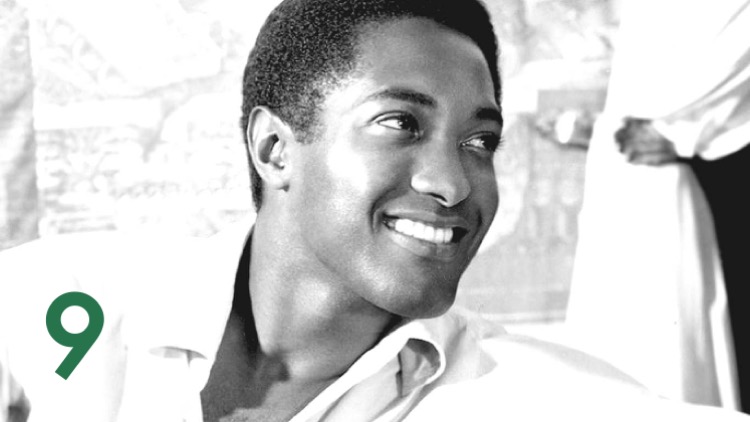

Two specific events inspired Sam Cooke to write “A Change is Gonna Come” toward the end of 1963. The first occurred when Cooke, his wife, and his band were turned away from a “whites only” Holiday Inn in Shreveport, Louisiana, while on tour through the South. One of the biggest stars in contemporary music, Cooke – who was born in Mississippi, but grew up in Chicago – was appalled that even a Black man of his stature would be denied a room at the national hotel chain.
The second source of inspiration came when Cooke first heard Bob Dylan’s “Blowin’ in the Wind” (#103) toward the end of 1963. Genuinely moved by Dylan’s plea for peace and equality, Cooke believe that he – as a Black man with a significant platform in a still deeply-segregated nation – had a responsibility to use his music as a force for social change. The immediacy of the moment – what Martin Luther King, Jr. had recently referred to as the “fierce urgency of now” – compelled Cooke to take action. That action would come in the form of the greatest protest song ever written.
By the time that he wrote “A Change is Gonna Come,” Sam Cooke had already become involved in the struggle for civil rights. His friendships with Muhammad Ali and Malcolm X placed him within arms reach of some of the most influential – and controversial – men in the movement. However, his virtually unprecedented status for a Black man in the music industry secured Cooke with not only an enormous outlet within mainstream America, but also a financial security that few of his contemporaries possessed. “A Change is Gonna Come” was the product of fierce conviction, mixed with a rarified sense of artistic freedom.
Even still, the headwinds that Cooke’s message of equality, tolerance, and perseverance faced were mighty. When released as a single, his verse about being turned away at a movie theatre was edited out, for fear that its direct, unambiguous nature would turn off radio listeners who were weary of social messaging in pop music. Cooke himself would refrain from performing the song during live engagements – partially because of its tough-to-reproduce arrangement, and partially because its heavy content clashed with the more upbeat numbers in his repertoire.
Sam Cooke died in Los Angeles in December of 1964; the circumstances of his death remain a subject of heavy debate. While “A Change is Gonna Come” would not be released as a single until two weeks after his passing, it had already become a central part of the legacy that Cooke left behind, serving as the centerpiece to his 1964 album, Ain’t That Good News. Its beautiful composition, powerful message, and Cooke’s captivating vocal performance give the song an emotional resonance that precious few tracks in the American pop music canon can match.
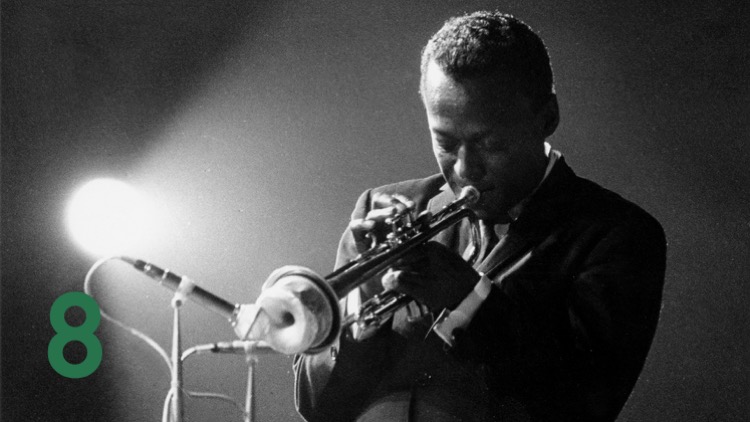

Red Garland was a boxer, fighting Sugar Ray Leonard for eight rounds in a 1942 exhibition match. Though his hands had once been employed for the sake of violent sport, the Texas native was also a nimble pianist. Throughout his decades-long career, Garland worked with some of the most iconic names in jazz music: Art Blakey, Coleman Hawkins, Kenny Burrell, and many others.
Joe Jones was a veteran of the Second World War. Though he was so associated with the city of his birth – and eventual death – that he was known as “Philly Joe,” when the war ended, Jones found himself in New York, at ground zero of the city’s bebop scene. He quickly became the most sought-after drummer in town. In time, luminaries such as Bill Evans would cite Jones as their favorite drummer.
Another Pennsylvanian, Paul Chambers was a virtuoso bassist – one whose chops kept him busy on the jazz scene, but who also had a knack for classical stylings. The range of his talents – and particularly his skill with the bow – would endear Chambers to some of the biggest figures in jazz. The list of his collaborators essentially reads like a “who’s who” of the genre from the years of 1955-1967.
Miles Davis was a genius – perhaps the greatest mind that jazz would ever produce. By the end of the 1940s, Davis had already done enough to become a legend. For the next four decades he would turn the genre on its head, time and time again, releasing no less than thirty utterly game-changing albums, all while employing trailblazing figures such as John Coltrane, Herbie Hancock, John McLaughlin, Wayne Shorter, and countless others. One would be fighting an uphill battle in arguing that he isn’t the most important musical figure in American history.
On May 11, 1956, these four men entered Rudy Van Gelder’s studio in Hackensack, New Jersey. Among the dizzying array of tracks that they would record that day – most of which also included the aforementioned John Coltrane – “It Never Entered My Mind” stands out as something truly special. For five-and-a-half-minutes, these four remarkably talented men put their resumes and egos aside, and – rather than showing off their extraordinary skills – let the absolutely sublime combination of music and moment take over. Whether by talent, restraint, inspiration, or something more divine, in those five-plus minutes, they crafted the most beautiful recording in the history of jazz music.
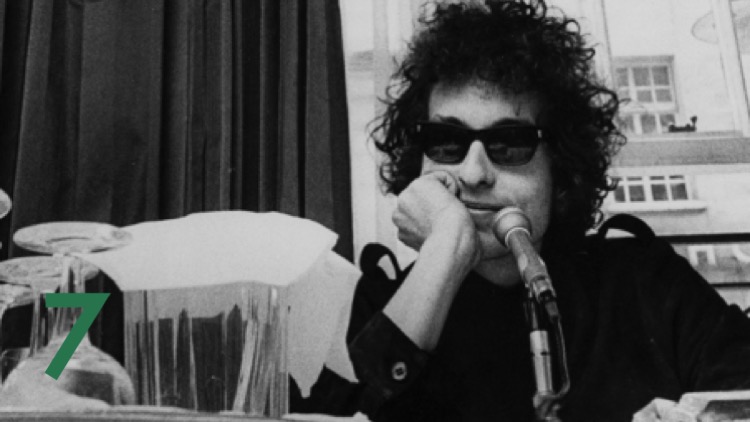

Over the course of his sixty-year-long career, Bob Dylan has created countless rock and roll archetypes: the earnest folk singer; the jilted lover; the poet in retreat; the fire and brimstone evangelist; the wise, aged curmudgeon. Of all these, none loom larger in his legacy than that of the methamphetamine-fueled genius – the one whose three-album arc from 1965’s Bringing It All Back Home through 1966’s Blonde on Blonde continues to set the standard for rock trilogies.
While it’s the easy, obvious pick, it is the opening track to the middle record in that trilogy – Highway 61 Revisited – that epitomizes Dylan’s most brilliant period. “Like a Rolling Stone” followed in the footsteps of earlier tracks like “It Ain’t Me Babe” (#489) and “Maggie’s Farm” (#581), in that it could be read as Dylan’s declaration of independence from the folk scene from which he emerged, but that had – in his mind – turned its back on him once he followed his muse in a different direction.
That direction manifests most gloriously in “Like a Rolling Stone.” The song’s opening lines alone seemed to signal an entirely new possibility of depth for pop lyricism:
Once upon a time you dressed so fine
Threw the bums a dime in your prime, didn’t you?
People call say ‘beware doll, you’re bound to fall’
You thought they were all kidding you
While ostensibly aimed at a specific individual – rampant speculation over the identity of “Miss Lonely” persists to this day – the object of Dylan’s scorn, vitriol, and (perhaps) compassion may never have been any one single person. One of the more interesting reads of the track – an interpretation supported by even Dylan’s own comments – is that it was Dylan himself who was the intended recipient of the screed-turned-pop-single.
The very fact that it was released as a pop single displays the sheer audacity of “Like a Rolling Stone.” At over six minutes long, the winding verses sounded like nothing on the radio – or elsewhere – at the time, and yet, the track would reach the top 10 in many nations, peaking at number 2 in the United States in the autumn of 1965.
Thirty-three years later, in the fall of 1998, I was a first-generation freshman in college. I was living at home, working full-time while attending classes. To say that I had a chip on my shoulder would be putting it mildly. Everywhere I looked, I saw people who – I conveniently assumed – had it easier than I did. A significant part of me felt as if I – a working class kid – did not belong there. While I harbored more than a little resentment toward my newfound peers, having been a self-professed “high school slacker,” I was unwilling to admit that my deepest frustrations were mostly self-contained. Incidentally, it was during that semester that I became borderline obsessed with Highway 61 Revisited. I wasn’t exactly sure why it resonated with me so much at the time, but I think I get it now.
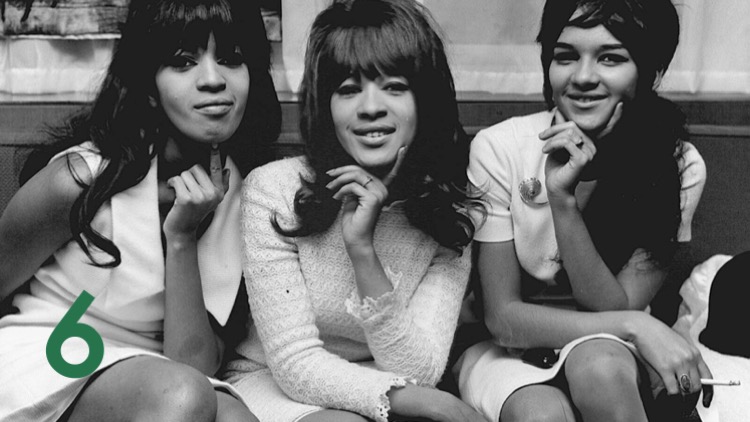

Considered by many to be the ultimate pop song, “Be My Baby” is Phil Spector’s masterpiece – the perfect realization of his famous Wall of Sound production technique. On a much larger scale, it is – quite possibly – the one recording most responsible for creating the notion that pop music could, in fact, be looked upon as a serious art form.
Written by Spector, alongside the husband-wife songwriting team of Ellie Greenwich and Jeff Barry, “Be My Baby” follows a relatively simple pop formula, but its endlessly appealing melodies, soaring chorus, and rich atmosphere were nothing short of wholly enveloping. Spector had produced great singles before – though this was his first session with The Ronettes – but none in which every individual element cohered into such an enchantingly realized finished product.
For all of its melodic appeal, the biggest hook in “Be My Baby” is arguably a rhythmic one. Literally kicking off the song is Hal Blaine’s now-iconic repeated “boom, boom-boom, crack” drum figure – the piece that has become the oft-copied song’s most frequently tributed element. While Blaine’s subsequent fills are more technically impressive, few drum patterns – if any – are as instantly-recognizable as “Be My Baby”’s introduction.
The other presence on “Be My Baby” that manages to separate itself from Spector’s Wall of Sound is that of his future wife, Ronnie Bennett. The only member of The Ronettes to actually appear on the track, Bennett’s lead/backing vocals stand among the most charmingly captivating performances in the realm of sixties pop music. There’s a crystalline mix of innocence, sincerity, and vulnerability to Bennett’s vocals that belie the deeply troubled relationship she was about to embark upon with the notoriously temperamental Spector.
Released in August 1963, “Be My Baby” became one of the year’s biggest hits, reaching number 2 on the American pop charts, and performing similarly well globally. Surrounded by tracks whose appeal was ephemeral at best – such as The Fireballs’ “Sugar Shack,” which prevented it from topping the U.S. charts – “Be My Baby” ultimately dug in for the long run. It rightfully remains one of the most enduring and beloved songs of the twentieth century.
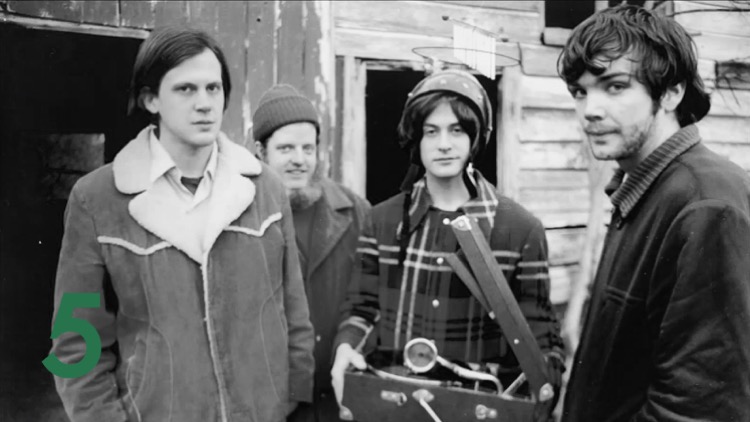

This wasn’t always my favorite song on Neutral Milk Hotel’s beloved second – and to this date – final album. I’ve mentioned elsewhere on this list that it was the opening “King of Carrot Flowers Pt. One” (#300) which made me an instant fan; how the visceral “Holland, 1945” (#68) is one of the most cathartic pieces of music ever committed to tape; how “Two Headed Boy Pt. One” (#410) contains some of the most beautifully surrealistic poetry in the pop music canon; how the closing “Two Headed Boy Pt. Two” (#541) never fails to devastate. At various points, each of these tracks has spent time as my favorite song from this wonderfully weird record that first burrowed its way into my brain nearly twenty years ago, and has scarcely left it since.
And yet, it is the title track which has ultimately separated itself from the pack, and which now stands as the highest-ranked song on this list from the indie rock genre that still, very much, remains squarely in my musical wheelhouse. There wasn’t any one particular listen that elevated “In the Aeroplane Over the Sea” into this lofty position, but rather, a gradual sense of perspective that has given the song a much deeper personal resonance over the years.
Aside from “Aeroplane”‘s fantastic melody and homespun arrangement, it is the universality of the song that makes it such a special moment in a record that could fairly be described as emotionally draining. Whereas the aforementioned tracks are adorned with lavish imagery and harrowing historical reference points, “Aeroplane” is comparatively straightforward, and arrestingly elemental. There’s little interpretation needed for the song to hit its mark:
What a beautiful face
I have found in this place
That is circling all ’round the sun
What a beautiful dream
That could flash on the screen
In a blink of an eye and be gone from me
Soft and sweet
Let me hold it close and keep it here with me
The bittersweet nature of this opening verse is exquisite, but absolutely cutting for anyone who has ever stood – even on the periphery – of a deep, sudden loss. The second verse projects a future that comes for all, but is no less tragic for its inevitability:
And one day we will die
And our ashes will fly from the aeroplane over the sea
But for now we are young
Let us lay in the sun
And count every beautiful thing we can see
Love to be
In the arms of all I’m keepin’ here with me
Again, Jeff Mangum gorgeously counters the bitter with the sweet, to the point of aching acceptance. There’s no abstraction, no fantasy – just the most affecting “live in the moment” messaging in all of pop music.
Things get slightly more in line with the surrealism at the heart of the surrounding tracks as the song reaches its mid-section: the fumbling young lovers of “King of Carrot Flowers” make a cameo; Mangum observes the curiosity of the “music that sounds from the streets” as the carnivalesque brass swells behind him; and the ghosts that haunt the rest of the album reappear, as if summoned by Julian Koster’s “singing saw.”
The final verse brings “Aeroplane” back to terra firma. Mangum repeats his opening devotional, but – with all the optimism he can summon – expresses the hope that the love of which he speaks can truly be eternal:
And when we meet on a cloud
I’ll be laughing out loud
I’ll be laughing with everyone I see
Then, with one line – my favorite line in any song, ever – the laughs of Mangum and his compatriots reflect on the wonderful absurdity of the life that they once knew:
Can’t believe how strange it is to be anything at all
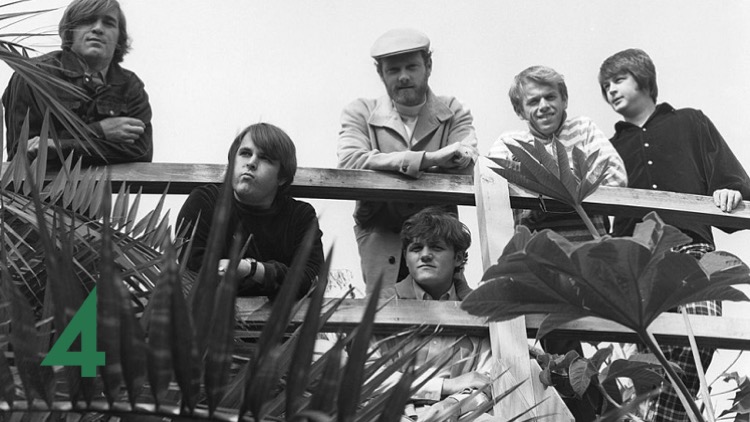

It’s no minor detail that what is, perhaps, the greatest love song of all-time begins with the tease, “I may not always love you.” The big beating heart that serves as the centerpiece of Brian Wilson’s magnum opus is shrouded in Wilson’s own shaken confidence – one that belies the assured moments of its lyrics, and hints at the true desperation in the repeated phrase, “God only knows what I’d be without you.” On the surface, it might sound like a statement of conviction in a rock-solid relationship, but anyone remotely familiar with Wilson’s story is likely to hear it as a plea addressed to his wife, Marilyn, to remain by his side – even if the feeling was waning.
While it’s tough to make definitive pronouncements – especially ones that appear to contradict statements from the song’s creators – the evidence is there. By 1966, Wilson was already a deeply scarred man: unable to tour with his bandmates – some of whom scarcely approved of his new artistic direction; surrounded by opportunists; and rapidly descending into a dangerous combination of drug use and undiagnosed mental illness. Despite this backdrop, Wilson had reached a creative epiphany – producing compositions and arrangements far more complex and beautiful than anything ever heard in pop music before, or since. Pouring every fiber of his facility into his art, Wilson was spiraling in every other aspect of his life, and it makes perfect sense that he – a man who would eventually become as famous for his fears as he had for his music – would express his greatest anxiety in his greatest work.
Whether consciously or unconsciously, these complex feelings must have been expressed to Tony Asher, who helped Wilson pen the lyrics to most of Pet Sounds. To bring “God Only Knows” to life, Wilson also leaned heavily on his brother, Carl, who delivered the soaring lead vocal that perfectly captures the vulnerability of Asher’s lyrics. It is on this track that Pet Sounds, The Beach Boys, Wilson – and, quite possibly, pop music itself – reach their collective zenith, but it’s the melancholic quality at the song’s core that truly pushes “God Only Knows” into the pantheon.
That melancholy quality carries though to the musical arrangement – one of Wilson’s best. Listening to the instrumental mix of the song is a stunning experience – though undoubtedly one accentuated by an awareness of what is missing. Like all of Pet Sounds, “God Only Knows” is steeped in baroque affectations. It’s the delicate lead melody – played on the French horn – that first captures attention, but each individual component shines, and is perfectly placed. Personally, I find the sparse first verse to be the most stunning. The piano chords intertwine with Carole Kaye’s bass line, revealing the song’s compositional elegance, and the clip-clop percussion – bathed beautifully in reverb from the echo chamber of Western Studio – shows the elemental perfection of its production.
Perhaps the most revealing aspect of listening to the instrumental take of “God Only Knows” is hearing Brian abruptly call the band off beyond the eventually established fade point. Dispassionately, the twenty-three-year-old genius – who had just witnessed the moment that would best define his talents for all of time to come – states to the assembled musicians, “we got it, thank you very much,” almost as if nothing extraordinary had just occurred.
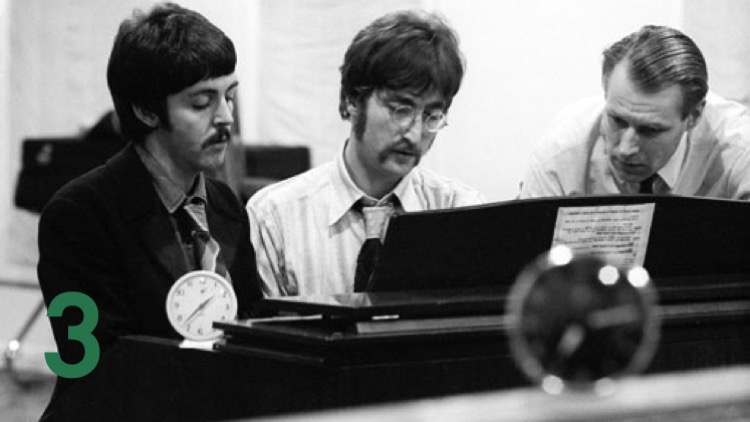

The concept of memory – and particularly “infantile amnesia” – is fascinating to me. Like most others, I have vague recollections from ages 2-3 that may or may not have ever happened, (science seems to argue that most of our earliest memories are likely fabrications, no matter how long they have existed in our own minds as fact). Those same studies suggest that significant moments in one’s early life tend to strengthen our adjacent memories, and supporting that theory, the fuzziness of my earliest recollections grows much clearer around the time that my younger brother was born in early 1983. Anything before then is little more than a blur, but beyond that point, I can recall specific settings, conversations, and sharp sensory details.
Many of those sensory details involve music: my dad’s record collection; preschool sing-alongs; background music at the grocery store. My remembrances of specific combinations of song and moment are far reaching: “Beat It,” “Carefree Highway,” “Mickey Mouse Disco,” “Our House” (by both CSNY and Madness), and Al Stewart’s “Time Passages,” for some reason. By 1984, I have a reasonably sharp recollection of pop music happenings: the inescapability of “Born in the U.S.A.” and “Careless Whisper,” in particular, come to mind. I don’t remember having thoughts on most of those songs, per se, just being keenly aware that they existed, and – when I heard them later down the road – having tangible memories of experiencing them in the moment.
It was in the winter of 1984-85 that I can first remember having a specific reaction to a specific song. I was in the back seat of my mom’s car with my younger brother. We were parked outside of Northern Arizona University’s Walkup Skydome, where my older brother was about to play a hockey game. Being that it was Flagstaff in the middle of the winter, the car was running, leaving the heater – and the radio – on. Perhaps it was the grandeur of being in the shadow of the largest structure in town that added an immensity to the moment, but I’m not sure that it was necessary.
I didn’t know this song was by The Beatles. Aside from “Help!” (#326) – which had its own memory moment – at that point in my young life, I probably couldn’t have identified a single song as being a Beatle recording. I knew nothing of Sgt. Pepper, Studio Two, George Martin, atonal crescendos, automatic double tracking, or whatever the hell “I’d love to turn you on” meant. All I knew is that in that moment, this song – the greatest recording by the greatest pop act that ever has, or ever will, exist – gave me chills: ones that I knew were not caused by the freezing cold air outside.
There’s no additional narrative. It was just an isolated moment, contained within a part of my life that is accessible only through similarly scattered snapshots, both real and metaphorical. It would be years before I eventually connected “A Day in the Life” with The Beatles, despite the fact that I must have heard it at least a few times in the interim. I don’t recall. Our memories – and the persistence of them – are mysterious things. For all I know, the scene that I just shared is only another one of those innocently mis-recollected moments, even if I can picture it as clear as yesterday.
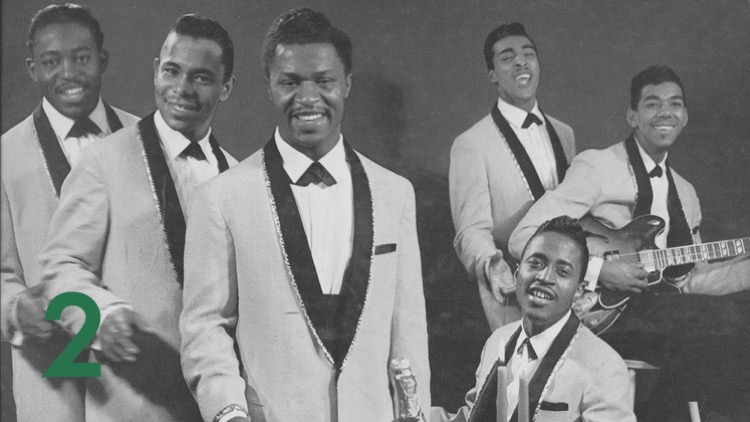

Surely, after nearly 1000 song entries, I have exhausted my reserve of adjectives. Had I tackled this list in reverse order, I would’ve done so almost immediately. Call it ethereal; call it captivating; call it sublime; call it utterly fucking haunted. No matter how you describe it, The Flamingos’ 1959 recording of “I Only Have Eyes for You” is a simply stunning piece of music – beautifully arranged, masterfully performed, and captured in a recording that was, at minimum, several years ahead of its time.
Originally written for the 1934 film Dames, “I Only Have Eyes for You” had already become a time-tested standard by the time that Terry Johnson – lead tenor/guitarist of The Flamingos – decided to give the song a go. A reasonably successful act on the fading doo-wop scene, the Chicago-based group would ultimately craft a track that bridged the song forms of a soon-to-be-bygone era with the production depth of the wildly-innovate decade that stood looming on the horizon. As a result, “I Only Have Eyes for You” is a recording that is unsettlingly untethered to a specific time.
Legend has it that Johnson’s arrangement for “I Only Have Eyes for You” came to him – fittingly – in a dream. He would claim that the song’s chords and backing vocals arrived fully-formed, and that he – in order to avoid losing the song to posterity – summoned his bandmates in the middle of the night, in order to teach them the structure, harmonies, and the “doo-bop, sh-bop” hook that would soon make the song famous.
Johnson would also exercise significant control over the track’s production, which employs a number of innovative tricks in order to achieve the “dreamy” sound that had previously existed only in his mind. The complex vocal harmonies are bathed in heavy reverb, and the tremolo effect placed on Johnson’s guitar predicts the “sleepwalking” vibe of Santo & Johnny’s soon-to-be-recorded signature song (#306).
The entire track unfolds at a deliberate pace, almost as if in slow motion, but floating, rather than dragging. Perhaps the fact that it was recoded on Halloween 1958 helped in achieving its spectral sound. Whatever it is, there is something extraordinary – perhaps magical, or even supernatural – happening in this recording. Nothing in pop music’s history had ever sounded this atmospheric or evocative. Over sixty years on, it still hasn’t been matched.
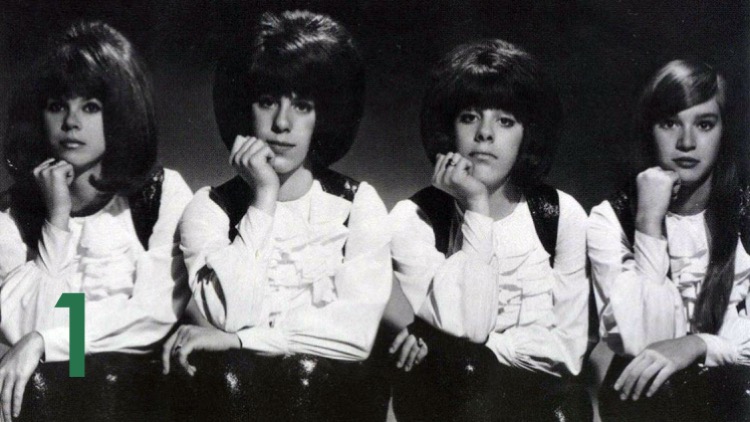

Ellie Greenwich is one of the unsung heroes of modern pop music. Alongside her then-husband Jeff Barry, Greenwich co-wrote several of the most indelible tracks of the 1960s: “Da Doo Ron Ron” (#545), “Then He Kissed Me” (#838), “Christmas (Baby Please Come Home)” (#330), “Maybe I Know” (# 221), “Leader of the Pack” (#233), “River Deep – Mountain High” (#567), “Be My Baby” (#6). Of all her great songs, none come off as a more personal piece of writing than “Out in the Streets”: a 1965 track that she and Barry wrote for The Shangri-Las.
Greenwich grew up in Levittown: a name that immediately evokes a very specific – and exceedingly narrow – ideal of post-war American suburbia. That setting informs “Out in the Streets” in a way that permeates the space between each of the song’s lines. It’s easy to picture the scene: an early-summer night in the suburbs, just after the streetlights have turned on; the “little kids” have gone home, making space for the teenage drama about to unfold. Close readers of this feature may recall that it’s essentially the same setting I described in my entries for Outkast’s “Da Art of Storytellin’ (Part 1)” (#163) and Pavement’s “Gold Soundz” (#21): two other tracks that I’d be okay calling my favorite song on any given day.
Like those two songs, “Out in the Streets” finds its characters tenuously balancing on the precipice of adulthood. This story’s heroine is concerned about her guy: a former street-tough, who no longer runs with the gang, and has become a shell of his former self, all for the good of the unnamed narrator. She knows that the do-good life is killing him, and that she must “set him free.” By the time of its early-1965 release, The Shangri-Las had already displayed many of the hallmarks that would define this single: a penchant for bad boys; melodrama; and a wonderfully revealing combination of toughness and vulnerability. “Out in the Streets” is on a different level though – a song so perfectly drenched in cinematic beauty, that it eclipses even the most iconic tracks in the Queens-based group’s catalog.
“Out in the Streets” is unquestionably campy – and utterly ridiculous, in a way that only sixties teen pop can pull off – but it’s also unremittingly gorgeous, from the ghostly wordless vocals that open the track, to the crescendo of the bridge, which features one of Mary Weiss’ most plaintive vocal performances. Only sixteen at the time of the recording, Weiss was more-than-capable of capturing the angst that accompanies an age in which every single emotion is experienced with an intensity that – both soothingly and tragically – fades with the alleged wisdom and perspective of adulthood. It’s that piercing, bittersweet nature that similarly defines so many tracks in the upper reaches of this list.
The handful of people that I have had conversations with regarding this project have held a lot of interest in what song would ultimately occupy the top spot. My intention has never been to make a declarative statement about what I think is the greatest song ever. Personally, if best is what you’re looking for, I think a fair case could be made for any of the songs in the top fifty, and plenty beyond. About two years ago, I narrowed down what I thought would roughly make up my top twenty tracks. As someone who has read a TON of music criticism over the years, I realized that – at some point – I had seen all of them referred to by at least one reputable source as “the greatest song ever.” All except for this one. Ever since, I’ve toyed with the idea of putting it at the top. Never once was I convinced that it didn’t belong there.


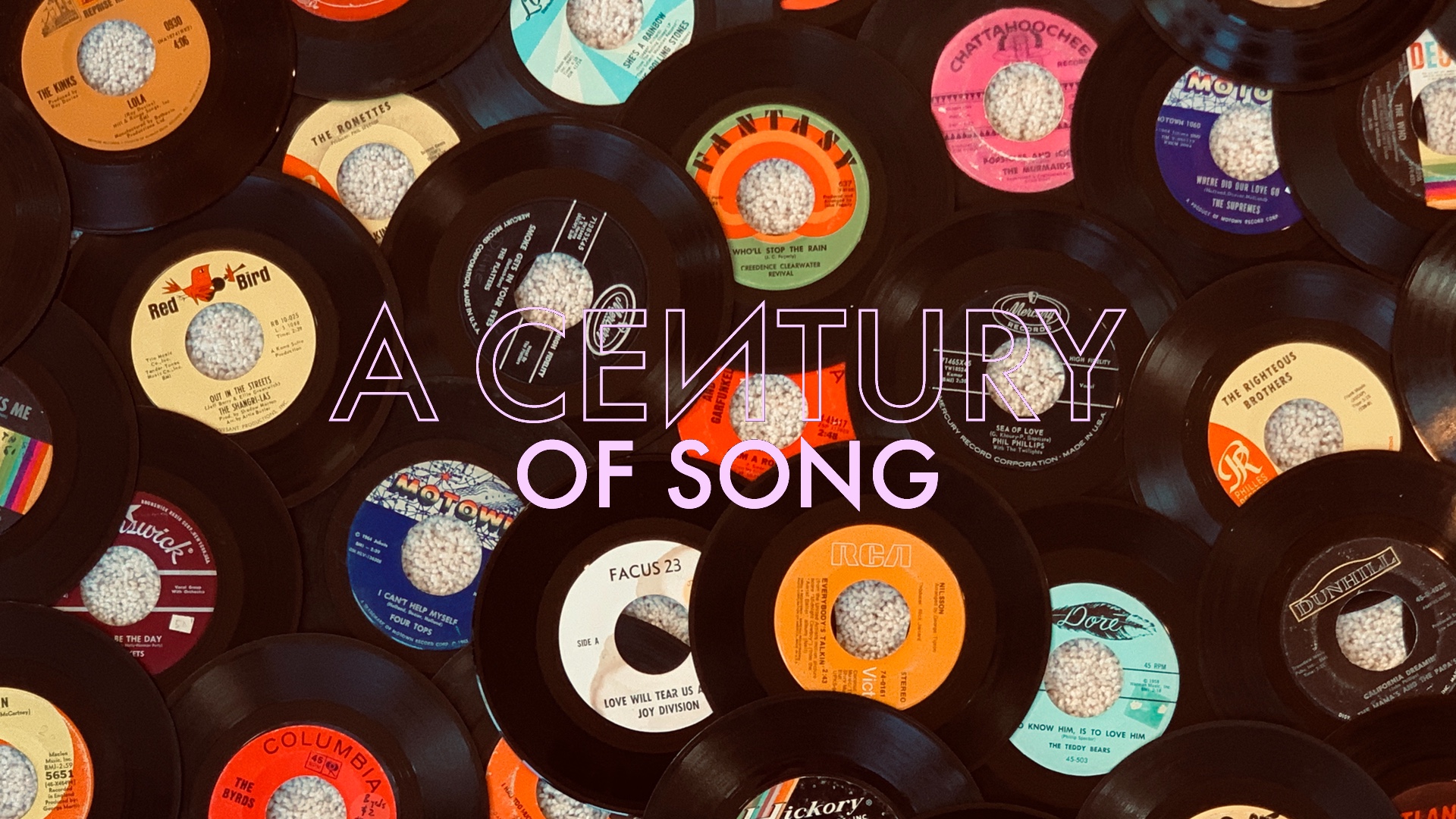
Matt,
I wanted to congratulate and commend you for this amazing list. It is no small task. I appreciate that you took time to define the parameters of the list and stating that this is your list, not “the” list. That is important, because I am sure that any music connoisseur (I use that term, because I don’t like the terms nerd, geek or junkie), such as myself, could point out what you missed, and I am sure they have, but I will say that in my opinion you did remarkably well. I think if I had attempted this myself, our lists would have more similarities than differences. I however have always struggled to manage a list limited to a certain number of songs. If I try to make a top 100, I struggle to get it down to 300 songs and so on. Concision is not my strong suit. I stumbled upon your list after you had already completed it, so I viewed it in ascending, not descending order. By and large as I continued to view it, many of the songs that I felt outraged you didn’t include eventually showed up. Since I am including this post on your final top 20, I will make a couple of comments on your final selections. First, I think you are the only other person I have ever encountered that also thinks that Miles Davis’ version of “It Never Entered My Mind”, is his best song. Thank you for making me feel validated for this choice. Secondly, I think you nailed with your description of The Flamingos, “I Only Have Eyes for You.” Calling it “ethereal” is putting it mildly. If someone told me this song was shot out of a cannon from a planet light years away, I would believe it. Thank you for taking the time to make this list.